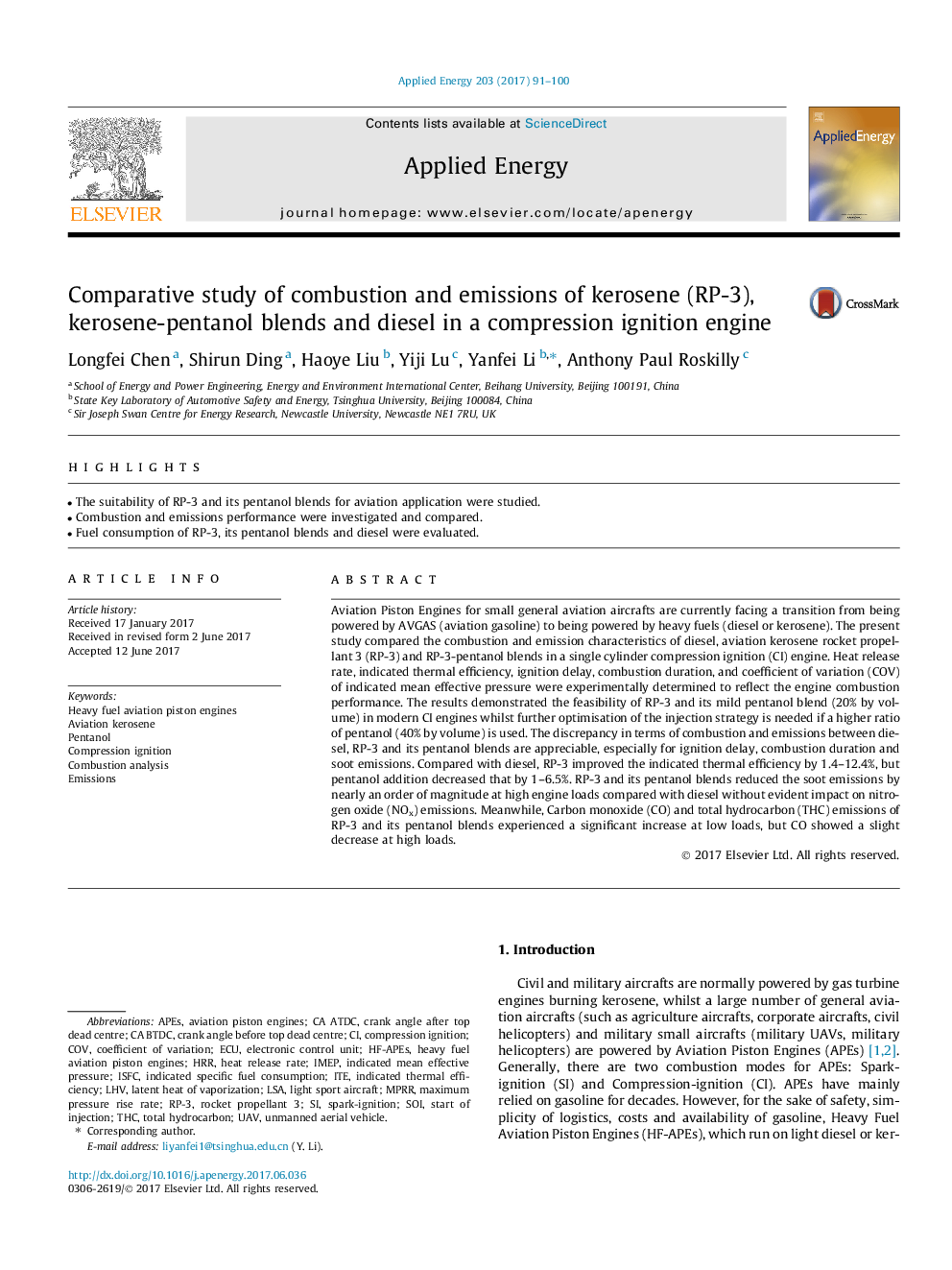| Article ID | Journal | Published Year | Pages | File Type |
|---|---|---|---|---|
| 4915756 | Applied Energy | 2017 | 10 Pages |
Abstract
Aviation Piston Engines for small general aviation aircrafts are currently facing a transition from being powered by AVGAS (aviation gasoline) to being powered by heavy fuels (diesel or kerosene). The present study compared the combustion and emission characteristics of diesel, aviation kerosene rocket propellant 3 (RP-3) and RP-3-pentanol blends in a single cylinder compression ignition (CI) engine. Heat release rate, indicated thermal efficiency, ignition delay, combustion duration, and coefficient of variation (COV) of indicated mean effective pressure were experimentally determined to reflect the engine combustion performance. The results demonstrated the feasibility of RP-3 and its mild pentanol blend (20% by volume) in modern CI engines whilst further optimisation of the injection strategy is needed if a higher ratio of pentanol (40% by volume) is used. The discrepancy in terms of combustion and emissions between diesel, RP-3 and its pentanol blends are appreciable, especially for ignition delay, combustion duration and soot emissions. Compared with diesel, RP-3 improved the indicated thermal efficiency by 1.4-12.4%, but pentanol addition decreased that by 1-6.5%. RP-3 and its pentanol blends reduced the soot emissions by nearly an order of magnitude at high engine loads compared with diesel without evident impact on nitrogen oxide (NOx) emissions. Meanwhile, Carbon monoxide (CO) and total hydrocarbon (THC) emissions of RP-3 and its pentanol blends experienced a significant increase at low loads, but CO showed a slight decrease at high loads.
Keywords
ISFCECULHVHRRSOIIMEPTHCMPRRITELSACOVcompression ignitionEmissionsIndicated thermal efficiencyCombustion analysisSpark-ignitionMaximum Pressure Rise RateStart of injectionCoefficient of VariationApesIndicated Specific Fuel ConsumptionHeat release rateIndicated mean effective pressureAviation keroseneelectronic control unitUnmanned Aerial VehiclePentanolUAVtotal hydrocarbonLatent heat of vaporization
Related Topics
Physical Sciences and Engineering
Energy
Energy Engineering and Power Technology
Authors
Longfei Chen, Shirun Ding, Haoye Liu, Yiji Lu, Yanfei Li, Anthony Paul Roskilly,
